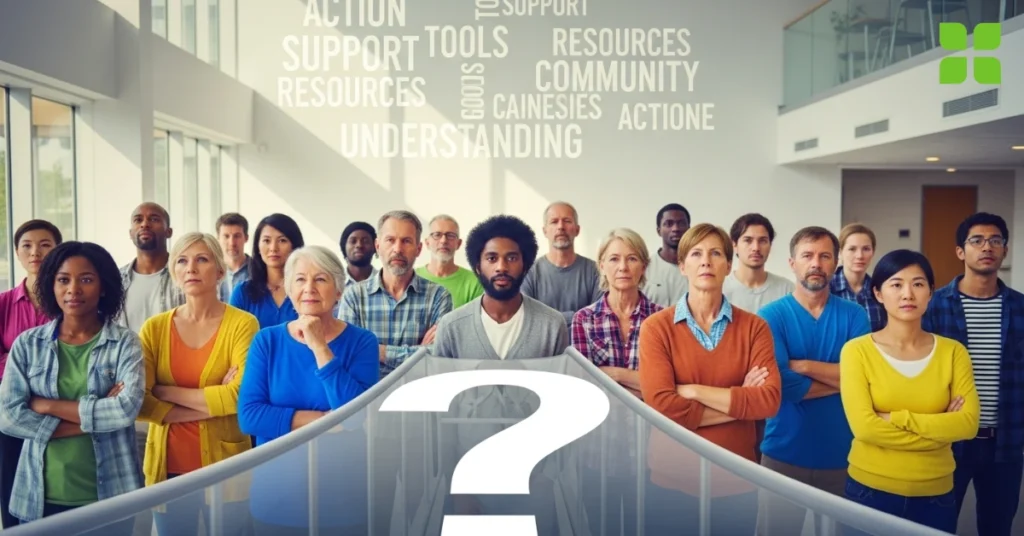We’re Aware of Mental Health. Now What?

For years, the goal was simple: awareness. We fought to bring the conversation about mental health out of the shadows and into the light. We shared statistics, posted green ribbons, and bravely told our stories, all in the service of making the invisible visible. And in many ways, we’ve succeeded. The term “mental health” is no longer whispered in hushed tones. It’s on billboards, in corporate wellness programs, and trending on social media.
We have achieved awareness. But now we face a more complex and vital question: Now what?
Because awareness, on its own, is not a destination. It’s a starting line. And there’s a growing danger that our hard-won “awareness” is becoming a form of passive noise—a background hum of accepted truth that doesn’t translate into meaningful action. We’re aware that people are struggling, but we still don’t know what to do when our friend cancels plans for the third time in a row. We’re aware of anxiety, but we still tell our children to “just calm down.” We’re aware of depression, but we still fall silent when a coworker’s grief becomes too uncomfortable.
The next chapter of this movement isn’t about awareness. It’s about attunement.
Awareness is knowing the radio is on. Attunement is carefully turning the dial, filtering through the static, and listening for the music. It’s the shift from a broad, intellectual understanding to a specific, empathetic practice. It’s the difference between knowing the definition of a word and understanding the poetry behind it.
Table of Contents
So, what does moving from awareness to attunement look like?
1.It means listening for the quiet parts.
Awareness campaigns often focus on the loudest, most dramatic expressions of mental struggle—the panic attack, the public breakdown, the crisis point. While vital, this focus can make us miss the far more common, quiet expressions of pain.
Attunement is learning to hear the silence. It’s noticing the friend who used to be vibrant and is now consistently subdued. It’s recognizing the exhaustion behind the smile of a new parent. It’s understanding that the high-achieving colleague who never misses a deadline might be fueled by a crippling anxiety. These are the quiet parts of suffering, the ones that don’t scream for attention. Attunement is leaning in and asking, not just “How are you?” but “How are you, really?” and then having the patience to wait for the real answer.
2.It means offering presence, not just solutions.
Awareness has equipped us with a vocabulary of solutions: “Have you tried therapy?” “You should meditate.” “Maybe you need more sunshine.” While well-intentioned, this rush to fix can feel dismissive. It subtly communicates that the person’s pain is a problem to be solved so that we can feel more comfortable.
Attunement is the practice of simply being present. It’s the courage to sit with someone in their darkness without needing to turn on a light. It’s saying, “That sounds incredibly hard,” and nothing more. It’s the quiet solidarity of a text message that says, “No need to reply, just thinking of you.” It replaces the pressure to solve with the permission to feel. It’s one of the most profound gifts you can offer another human being.
3.It means turning the practice inward.
Perhaps the most crucial aspect of attunement is applying it to ourselves. We can be “aware” of our own anxiety or burnout on an intellectual level, yet still push through, ignoring our body’s signals.
Self-attunement is the act of internal listening. It’s not just saying, “I feel stressed.” It’s asking, “Where in my body do I feel that stress? Is it a tightness in my chest? A clenching in my jaw? What is this feeling trying to tell me?” It’s about treating our own emotions not as an inconvenience, but as valuable information. It’s giving ourselves the same grace, patience, and non-judgmental presence we hope to offer others.
The era of awareness was necessary. It built the foundation. But now we must build the house. The work is no longer about shouting from the rooftops, but about the quiet, one-on-one conversations. It’s in the small, consistent acts of checking in, of listening without judgment, and of showing up.
We are aware. Now, let’s learn to be attuned. Let’s learn to listen to the quiet music of our own minds and the minds of those we love, and in doing so, truly begin to heal.
Read More:The Art of Mending: Why Our Broken Pieces Are Our Greatest Strength








